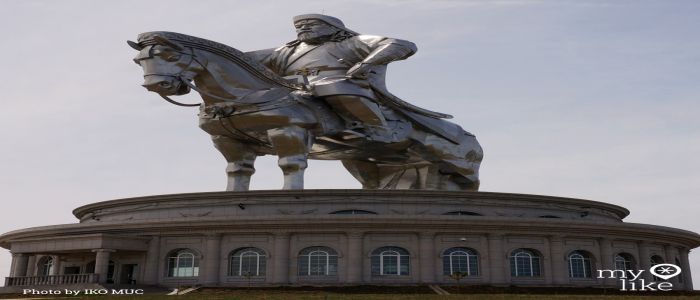
The temple in Ordos City draws scores of tourists and worshippers of the great Mongolian leader who reigned almost 800 years ago.
Genghis Khan is a familiar historical figure across the globe largely because of his characteristic ruthlessness during his many wars. History records that Genghis Khan, initially known as Temujin (“of iron” or “blacksmith”), is estimated to have killed about 40 million people between 1206 and 1227 during his conquest of at least 40 nations covering 12 million square miles. But amongst his native Mongol people and other ethnic groups in China’s northeastern Inner Mongolia Autonomous Region, Genghis Khan, who died almost 800 years ago, is still held in high esteem.
Elsewhere in Ordos City where his mausoleum is located and the rest of Inner Mongolia Autonomous Region, the presence of Genghis Khan towers in the daily lives of local people. His statues are commonplace in private homes and public places. A sprawling square in Ordos City is named after him. “He is worshipped and considered as a demi-god,” a local regional government official told Cameroon Tribune recently in Hohhot, the capital city. Inside the Genghis Khan Mausoleum in Ordos City are his imposing statues with lit candles in front, which are regularly replaced by vigilant guardians.
Before the statues, devotees prostrate in total submission to the man they believe still holds much blessings in stock for them. The mausoleum also contains civilization items of the time of Khan’s reign like utensils, weapons, clothing and written records. Wagier Qaqi, a female guide, on June 21, 2017, led 27 African journalists round the site. “Genghis Khan was so s...
Cet article complet est réservé aux abonnés
Déjà abonné ? Identifiez-vous >
Accédez en illimité à Cameroon Tribune Digital à partir de 26250 FCFA
Je M'abonne1 minute suffit pour vous abonner à Cameroon Tribune Digital !
- Votre numéro spécial cameroon-tribune en version numérique
- Des encarts
- Des appels d'offres exclusives
- D'avant-première (accès 24h avant la publication)
- Des éditions consultables sur tous supports (smartphone, tablettes, PC)














Commentaires